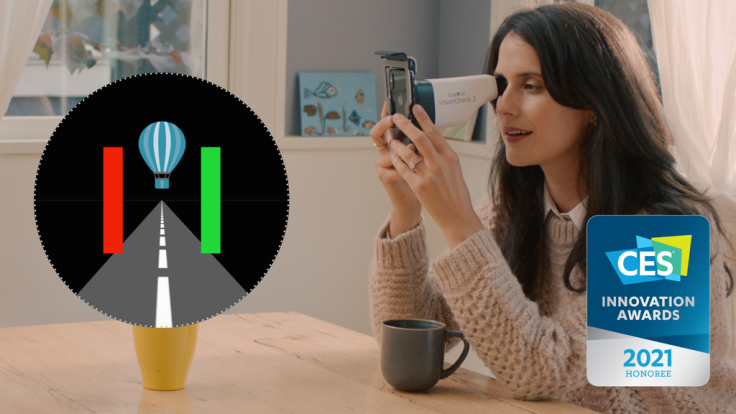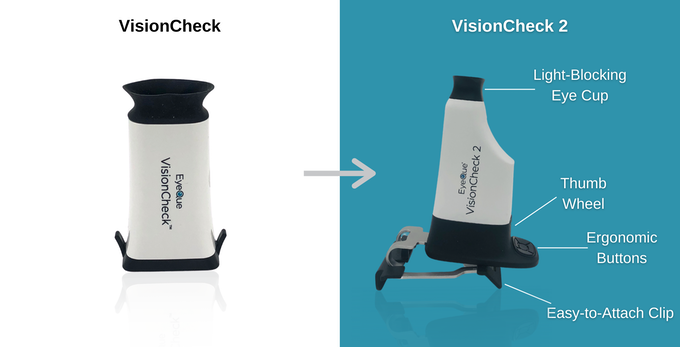CES 2021: Perform Your Own Eye Exams At Home With The VisionCheck 2

KEY POINTS
- The EyeQue VisionCheck 2 brings eye appointments into your own home
- The VisionCheck 2 takes the massive equipment found at the optometrist and shrinks it into the palm of your hand
- EyeQue will make sample glasses to ensure you completed the test correctly
The coronavirus pandemic has completely changed how we live, to put it lightly. People are more cautious and concerned about their health than ever before. This concern has led many to postpone trips to the doctor or dentist, which has its own consequences as well.
However, company EyeQue is looking to bring the benefits of visiting an optometrist into your own home with their VisionCheck gadgets. The first VisionCheck product is already available, but EyeQue took to CES 2021 to show off VisionCheck 2. This device uses a smartphone screen to replicate the expensive equipment found at an optometrist and is currently raising money right now on Kickstarter. The project has already reached its goal, so at this point, the Kickstarter campaign is more or less a pre-ordering system.

The VisionCheck 2’s eye testing program generates two lines on the smartphone screen. The user then moves one line until it is laying on top of the second. After completing the test, the program feeds the results through its algorithms and calculates the user’s vision test results. The VisionCheck 2 is capable of identifying not only near and farsightedness, but can even calculate if you have astigmatism.
These results are more or less the same ones you would get from an optometrist. Of course, these results can’t officially be referred to as a prescription because they are not given by a licensed physician, but it’s the next best thing.
So if the VisionCheck is already available, what is the difference between that and the VisionCheck 2? The differences are more cosmetic than anything else. The VisionCheck 2 is a bit more form-friendly and reduces the need for a Bluetooth connection and batteries compared to the original. The testing has also been slightly modified to run a little bit quicker.
If you are afraid you might mess something up when performing the test, that’s OK. The VisionCheck requires a user to complete at least three tests before submitting results. If any major discrepancies are found between the three test results, EyeQue support staff will reach out to provide assistance with completing the test to help ensure accuracy. Of course, users can perform more than three tests as well, which is recommended by EyeQue.
Before going out and spending money on expensive glasses, EyeQue also has a program where users can get a pair of trial glasses based on the results of their VisionCheck tests. These glasses only cost $19, so it isn’t a large investment to ensure that the lenses are the ones that are right for you (even though the frames from EyeQue will make you look a little bit like a certain famous teenage wizard). Once you are happy with the results, you can enter your information into glasses retailer websites like Zenni or EyeBuyDirect to get new glasses.
It should be noted that the VisionCheck 2 is a great way to determine your visual impairments, but it does not measure your overall eye health. It’s still recommended that you visit an optometrist even if you don’t need a new prescription.
The EyeQue VisionCheck is available right now, and, since the Kickstarter goal has been reached, VisionCheck 2 devices are anticipated to begin shipping in May of this year. Those who back the project can get a VisionCheck 2 for the early bird price of $65, which includes two years of EyeQue's subscription service. That's roughly a $29 deal. The original VisionCheck can also be purchased right now from EyeQue for $69.
© Copyright IBTimes 2025. All rights reserved.





















